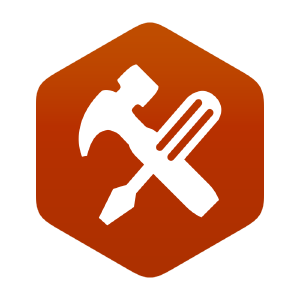4: Systems Analysis, Design, and Development
- Page ID
- 45512
\( \newcommand{\vecs}[1]{\overset { \scriptstyle \rightharpoonup} {\mathbf{#1}} } \)
\( \newcommand{\vecd}[1]{\overset{-\!-\!\rightharpoonup}{\vphantom{a}\smash {#1}}} \)
\( \newcommand{\dsum}{\displaystyle\sum\limits} \)
\( \newcommand{\dint}{\displaystyle\int\limits} \)
\( \newcommand{\dlim}{\displaystyle\lim\limits} \)
\( \newcommand{\id}{\mathrm{id}}\) \( \newcommand{\Span}{\mathrm{span}}\)
( \newcommand{\kernel}{\mathrm{null}\,}\) \( \newcommand{\range}{\mathrm{range}\,}\)
\( \newcommand{\RealPart}{\mathrm{Re}}\) \( \newcommand{\ImaginaryPart}{\mathrm{Im}}\)
\( \newcommand{\Argument}{\mathrm{Arg}}\) \( \newcommand{\norm}[1]{\| #1 \|}\)
\( \newcommand{\inner}[2]{\langle #1, #2 \rangle}\)
\( \newcommand{\Span}{\mathrm{span}}\)
\( \newcommand{\id}{\mathrm{id}}\)
\( \newcommand{\Span}{\mathrm{span}}\)
\( \newcommand{\kernel}{\mathrm{null}\,}\)
\( \newcommand{\range}{\mathrm{range}\,}\)
\( \newcommand{\RealPart}{\mathrm{Re}}\)
\( \newcommand{\ImaginaryPart}{\mathrm{Im}}\)
\( \newcommand{\Argument}{\mathrm{Arg}}\)
\( \newcommand{\norm}[1]{\| #1 \|}\)
\( \newcommand{\inner}[2]{\langle #1, #2 \rangle}\)
\( \newcommand{\Span}{\mathrm{span}}\) \( \newcommand{\AA}{\unicode[.8,0]{x212B}}\)
\( \newcommand{\vectorA}[1]{\vec{#1}} % arrow\)
\( \newcommand{\vectorAt}[1]{\vec{\text{#1}}} % arrow\)
\( \newcommand{\vectorB}[1]{\overset { \scriptstyle \rightharpoonup} {\mathbf{#1}} } \)
\( \newcommand{\vectorC}[1]{\textbf{#1}} \)
\( \newcommand{\vectorD}[1]{\overrightarrow{#1}} \)
\( \newcommand{\vectorDt}[1]{\overrightarrow{\text{#1}}} \)
\( \newcommand{\vectE}[1]{\overset{-\!-\!\rightharpoonup}{\vphantom{a}\smash{\mathbf {#1}}}} \)
\( \newcommand{\vecs}[1]{\overset { \scriptstyle \rightharpoonup} {\mathbf{#1}} } \)
\( \newcommand{\vecd}[1]{\overset{-\!-\!\rightharpoonup}{\vphantom{a}\smash {#1}}} \)
\(\newcommand{\avec}{\mathbf a}\) \(\newcommand{\bvec}{\mathbf b}\) \(\newcommand{\cvec}{\mathbf c}\) \(\newcommand{\dvec}{\mathbf d}\) \(\newcommand{\dtil}{\widetilde{\mathbf d}}\) \(\newcommand{\evec}{\mathbf e}\) \(\newcommand{\fvec}{\mathbf f}\) \(\newcommand{\nvec}{\mathbf n}\) \(\newcommand{\pvec}{\mathbf p}\) \(\newcommand{\qvec}{\mathbf q}\) \(\newcommand{\svec}{\mathbf s}\) \(\newcommand{\tvec}{\mathbf t}\) \(\newcommand{\uvec}{\mathbf u}\) \(\newcommand{\vvec}{\mathbf v}\) \(\newcommand{\wvec}{\mathbf w}\) \(\newcommand{\xvec}{\mathbf x}\) \(\newcommand{\yvec}{\mathbf y}\) \(\newcommand{\zvec}{\mathbf z}\) \(\newcommand{\rvec}{\mathbf r}\) \(\newcommand{\mvec}{\mathbf m}\) \(\newcommand{\zerovec}{\mathbf 0}\) \(\newcommand{\onevec}{\mathbf 1}\) \(\newcommand{\real}{\mathbb R}\) \(\newcommand{\twovec}[2]{\left[\begin{array}{r}#1 \\ #2 \end{array}\right]}\) \(\newcommand{\ctwovec}[2]{\left[\begin{array}{c}#1 \\ #2 \end{array}\right]}\) \(\newcommand{\threevec}[3]{\left[\begin{array}{r}#1 \\ #2 \\ #3 \end{array}\right]}\) \(\newcommand{\cthreevec}[3]{\left[\begin{array}{c}#1 \\ #2 \\ #3 \end{array}\right]}\) \(\newcommand{\fourvec}[4]{\left[\begin{array}{r}#1 \\ #2 \\ #3 \\ #4 \end{array}\right]}\) \(\newcommand{\cfourvec}[4]{\left[\begin{array}{c}#1 \\ #2 \\ #3 \\ #4 \end{array}\right]}\) \(\newcommand{\fivevec}[5]{\left[\begin{array}{r}#1 \\ #2 \\ #3 \\ #4 \\ #5 \\ \end{array}\right]}\) \(\newcommand{\cfivevec}[5]{\left[\begin{array}{c}#1 \\ #2 \\ #3 \\ #4 \\ #5 \\ \end{array}\right]}\) \(\newcommand{\mattwo}[4]{\left[\begin{array}{rr}#1 \amp #2 \\ #3 \amp #4 \\ \end{array}\right]}\) \(\newcommand{\laspan}[1]{\text{Span}\{#1\}}\) \(\newcommand{\bcal}{\cal B}\) \(\newcommand{\ccal}{\cal C}\) \(\newcommand{\scal}{\cal S}\) \(\newcommand{\wcal}{\cal W}\) \(\newcommand{\ecal}{\cal E}\) \(\newcommand{\coords}[2]{\left\{#1\right\}_{#2}}\) \(\newcommand{\gray}[1]{\color{gray}{#1}}\) \(\newcommand{\lgray}[1]{\color{lightgray}{#1}}\) \(\newcommand{\rank}{\operatorname{rank}}\) \(\newcommand{\row}{\text{Row}}\) \(\newcommand{\col}{\text{Col}}\) \(\renewcommand{\row}{\text{Row}}\) \(\newcommand{\nul}{\text{Nul}}\) \(\newcommand{\var}{\text{Var}}\) \(\newcommand{\corr}{\text{corr}}\) \(\newcommand{\len}[1]{\left|#1\right|}\) \(\newcommand{\bbar}{\overline{\bvec}}\) \(\newcommand{\bhat}{\widehat{\bvec}}\) \(\newcommand{\bperp}{\bvec^\perp}\) \(\newcommand{\xhat}{\widehat{\xvec}}\) \(\newcommand{\vhat}{\widehat{\vvec}}\) \(\newcommand{\uhat}{\widehat{\uvec}}\) \(\newcommand{\what}{\widehat{\wvec}}\) \(\newcommand{\Sighat}{\widehat{\Sigma}}\) \(\newcommand{\lt}{<}\) \(\newcommand{\gt}{>}\) \(\newcommand{\amp}{&}\) \(\definecolor{fillinmathshade}{gray}{0.9}\)- 4.0: Introduction
- This page explores the intricate systems underlying the simple task of picking up a prescription at a pharmacy. It emphasizes the crucial role of systems analysts in creating information systems that manage prescriptions safely by verifying allergies and medication interactions. The text also discusses the significance of systems analysis and design in application development, focusing on identifying business problems, user needs, and mobile device design considerations.
- 4.1: Systems Analysis and Design for Application Development
- This page outlines the systems analysis and design process, focusing on improving information systems to align with business needs while addressing ethical concerns in system design. It contrasts the structured Software Development Life Cycle (SDLC) with the flexible Agile methodology, emphasizing stakeholder collaboration and iterative delivery. The analysis reports recommend solutions based on user data, while the Agile approach encourages responsiveness to change.
- 4.2: Defining the Business Problem and User Requirements
- This page covers learning objectives for identifying business problems and user requirements, emphasizing problem definition, solution evaluation methods (like the "five whys"), and the importance of user requirement gathering (functional vs. nonfunctional needs). It discusses visual tools (use case diagrams, BRDs) for project implementation and the significance of stakeholder engagement.
- 4.3: Technical Design Methodologies and Practical Applications
- This page highlights the importance of proper data archiving for future reference and compliance with retention policies. It discusses key systems design principles, ethical standards for information system professionals, and the data cycle stages, particularly in healthcare contexts.
- 4.4: Designing for Mobile Devices and Other Design Considerations
- This page discusses the significance of user-centered design (UCD) for mobile apps and social media by integrating user feedback to improve experience and build loyalty. It covers essential design considerations like defining business goals, ensuring simplicity, reliability, and platform compatibility, as well as the roles of strategic planning and UI/UX design.
- 4.5: Key Terms
- This page offers definitions and explanations of terms associated with accessibility, software development, system design, and user experience, covering Agile methodologies, process mapping, data flow diagrams, client/server architectures, and network design. It emphasizes usability, user requirements, and user-centered design, underscoring the importance of the user experience.
- 4.6: Summary
- This page discusses systems analysis and design, highlighting a structured approach that enhances operational efficiency, identifies risks, reduces costs, and improves system quality. Analysts use various techniques for identifying user requirements, stressing early planning to prevent delays. The technical design encompasses both logical and physical architectures, with prototypes aiding in issue detection.
- 4.7: Review Questions
- This page covers systems analysis and design, highlighting drawbacks, tools, processes, roles, and methodologies, with a focus on Agile, user-centered design, and the necessity of clear problem definitions. Key topics include the systems architect's responsibilities, iterative design, user feedback, and mobile app design considerations. It also discusses methods like the five-whys and emphasizes research and communication protocols to achieve project success.
- 4.8: Check Your Understanding Questions
- This page discusses various aspects of systems analysis and design, including the systems development life cycle (SDLC), methodologies, analysis tools, team roles, business problem-solving, requirements traceability, design diagrams, challenges in gathering requirements, effective design elements, logical vs. physical designs, prototyping, network architecture, user-centered design, and the influence of globalization on mobile app design and strategic planning.
- 4.9: Application Questions
- This page presents reflection prompts on the Agile methodology for team projects, including ideal sprint durations and engagement strategies. It emphasizes identifying organizational improvement opportunities and effective requirement gathering. Additionally, it discusses analyzing usability of popular websites or apps by exploring user preferences, feedback methods, and competitor comparisons.


